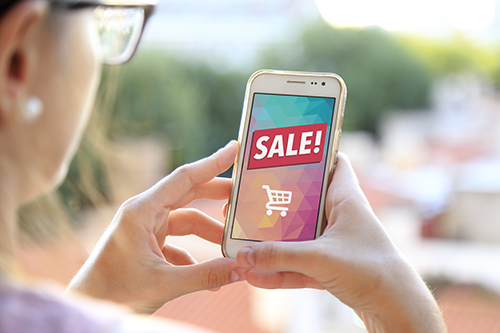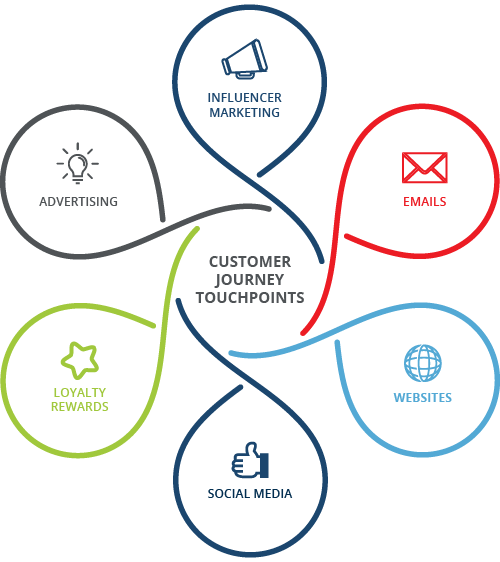Consumers have always valued meaningful personal interactions—the baker who greets them by name or the cashier who remembers their kids’ birthdays. In the past, only smaller boutiques, local shops and luxury brands could offer such intimate customer journeys. Meanwhile, people accepted the anonymity of the digital marketplace as par for the course.
But this is a new day. The arrival of social media, advanced analytics, and artificial intelligence has changed the way companies engage with their audience. Now, organizations of any size can tailor the digital experience to specific individuals. If consumer attitudes are any indication, the importance of the customer experience will only become more important in the coming years.
Personalization Is Nothing New, But Customized Digital Experiences Are
These days, online shoppers want more than a seamless digital experience; they want to feel personally connected to a brand. No longer satisfied with generic messages and 12-digit customer ID numbers, they yearn to stand out from the crowd. One survey conducted by Agilone revealed that 79% of people in the US and 70% of people in the UK expect brands to honor their individuality.
Millennials, in particular, value personal touches. They appreciate it when companies remember their names, their past purchases, and even their birthdays. That means businesses must try harder to connect with individuals at every stage of the customer journey. But what is the customer journey, and how can you personalize it?
What Is the Customer Journey?
A customer journey, much like a hero’s journey, tells a story. It follows the customer through every key interaction they have with your company, from the moment they become aware of your brand to the moment they become a loyal, purchasing customer. The journey may be different for each business and each type of customer, but major milestones typically include:
- Awareness: The customer discovers your brand through social media, advertisements, PR, or word of mouth.
- Engagement: The customer subscribes to a newsletter, signs up for promotions, follows your brand on social media, or engages with your business in some other way.
- Conversion: The customer makes their first purchase, and a lead becomes a conversion.
- Loyalty: The customer signs up for a loyalty program, racks up reward points, becomes a repeat customer, and the lifetime value of this client can begin to be measured.
Step into the Customer’s Shoes
When mapping the trip from awareness to loyalty, brands should focus on the customer’s point of view.
What do they want? What motivates them to move on to the step?
What emotions do they experience at each stage of the journey?
Take an example: Let’s say you’re an avid knitter. Your favorite arts and crafts store sends out three or four email promotions every month. The subject line addresses you by name. You hurry to open the email, only to find coupons for frames, colored pencils, holiday decorations, and scrapbooks—but no yarn!
You just wasted valuable time sifting through irrelevant offers. If the company had looked at your past purchasing history, they might have seen that you exclusively buy yarn from them. Then they could have sent more tailored promotions that feel personal – promotions handpicked just for you.
Once you’ve seen the journey from the customer’s perspective, you can refine your role. What can you do to help them achieve their goals? How can you remove obstacles that might stand in the way of engagement and conversion? Ignore the little details, and customers will be less likely to purchase from you in the future. Cater to their needs, their tastes, and you’ll win their loyalty. That’s what marketers mean by personalizing the customer journey.
Now It’s Time to Map Your Customer Journey
Journey mapping can help you perfect and personalize the customer experience. Essentially, you create a diagram that follows each type of individual through the various customer journey stages, from brand discovery to repeated purchases. What will move them along? What will stand as a barrier in their way? What do they want and how can you give it to them?
The ultimate goal is to personalize each touchpoint. Possible interactions include: 
- Advertising and Influencer Marketing (Awareness): Start at the beginning. How do people find your brand? Social media influencers, major publications, keyword searches or paid digital advertising? Instagram users, for example, may be looking for brands they can trust, rather than products they can buy. In that case, reach out to micro-influencers and tell them your company’s story without pushing specific products. If you get a lot of sales from keyword searches, then work on your SEO in a way that directs people to product pages. Whatever your data tells you, plan the customer journey
- Emails (Awareness & Engagement): There’s more to email marketing than personalized greetings. Let customers know when a product they’ve looked at goes on sale. If a visitor has signed up for your newsletter, send them valuable information, tips and tricks tailored to that particular type of client. You can also use a customer’s past purchases to anticipate what kind of offers they’re likely to take advantage of in the future.
- Websites (Awareness & Engagement): When someone walks in the door of a brick-and-mortar store, they expect a customer service representative to be available to answer questions. Think of visitors to your website in the same way. Offer live chats and user-friendly contact forms. Whether in person or online, it’s crucial to respond quickly to questions, comments or concerns quickly.
- Social Media (Engagement & Loyalty): Get in touch with major influencers, and use your own channel to reach out to your customers in a personal way. Meanwhile, take advantage of advanced analytics, like Facebook’s super-refined targeting tools, to learn more about building custom audiences and directing ads to the right people. Post how-to videos or a video touring your facility and introducing your team, try to make your social media voice unique.
- Loyalty Rewards (Loyalty). Offer long-term customers the chance to delve deeper into the brand experience.
Send out VIP promotions and rewards to let them know they’re valued, and add personal touches to make them feel like part of the family.
The Bottom Line: Personalization
Creating a customer journey map can seem overwhelming, but behind the new technology lies a time-honored principle: It pays more to be interested than to be interesting. That’s as true in business as it is in personal relationships. The more interested you are in your customer, the more loyal they’ll be to your brand. Take the time to listen to your clients and customers and use this information to begin mapping personalized client journey maps.
At the end of the day, humanizing digital encounters generates goodwill and provides a significant return on investment. A Study from Gartner, for example, revealed that personalization can increase B2B e-commerce revenues by up to 15 percent. Moving forward, successful businesses will have to leverage new technology to serve the age-old need of creating meaningful interaction on a personal level.
Need help integrating personalization into your digital user experience? Let our digital growth agency walk you through journey mapping process.